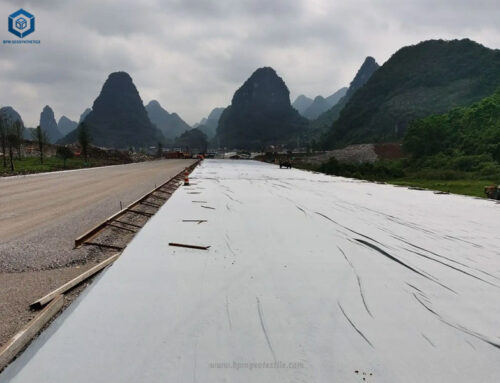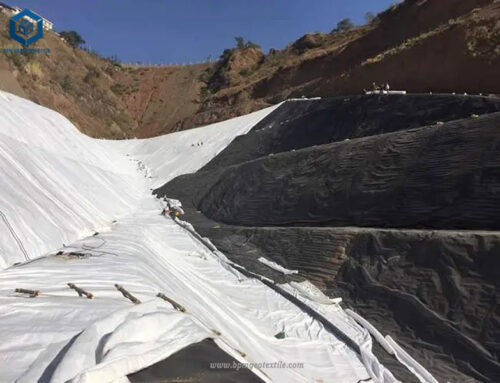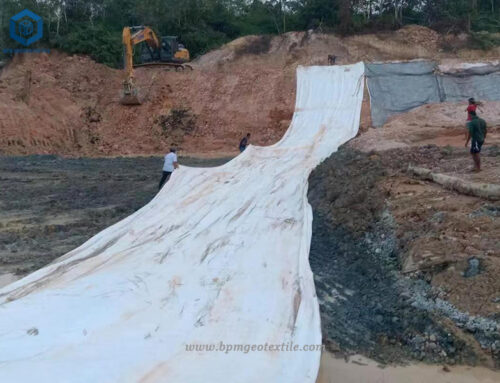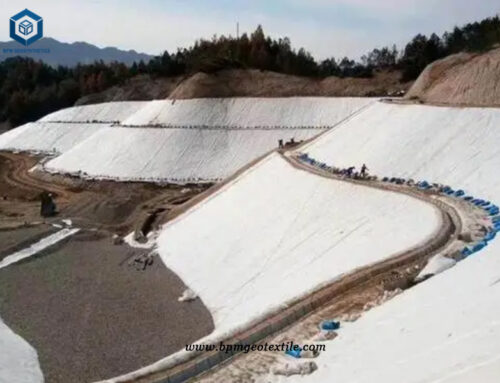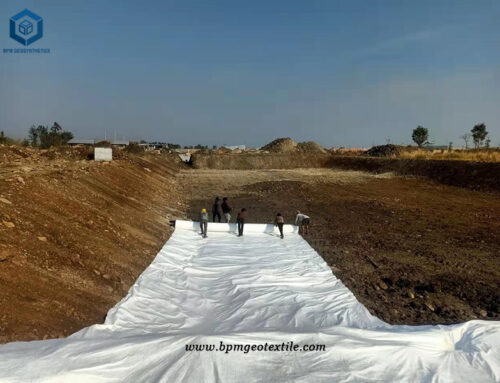PP spunbond nonwoven fabric is a type of non-woven fabric that is reinforced with polyester filament after the laying of a mesh. It finds extensive use in the manufacturing of operation gowns, surgical dressings, surgical masks, bedsheets for hospitals, and various other applications. The fabric’s strength and durability, along with its non-woven structure, make it suitable for medical and healthcare settings where hygiene and protection are crucial. The PP spunbond nonwoven fabric provides a reliable barrier against contaminants and is widely trusted in the healthcare industry for its performance and versatility.
1. What Is PP Spunbond Nonwoven Fabric?
PP spunbond nonwoven fabric, also known as polypropylene spun-bond nonwoven fabric, is a versatile material made from 100% polypropylene fibers. The production process involves extruding and spinning the polypropylene fibers to form a web of randomly-oriented, continuous filaments. This web is then subjected to a thermal bonding process, resulting in the creation of a nonwoven fabric.
To produce PP spunbond nonwoven fabric, polypropylene is first granulated from raw materials using the melt extrusion method. The granules are then melted and extruded through spinnerets, forming continuous filaments. These filaments are arranged in a random fashion and become entangled, creating a web-like structure. The subsequent nonwoven fabric is manufactured by subjecting this web to a thermal bonding process.
PP spunbond nonwoven fabric offers several advantages due to its composition and production method. It is lightweight, breathable, and possesses good tensile strength. The fabric is resistant to moisture, chemicals, and UV radiation, making it suitable for various applications. It is commonly used in geotextiles, agriculture (such as crop covers and weed control), hygiene products (like diapers and sanitary napkins), medical and surgical products (including gowns and masks), packaging, and numerous other applications where a lightweight and durable nonwoven fabric is required.
Compared with needle punched geotextile, PP spunbond nonwoven fabric is a versatile material produced by extruding and spinning polypropylene fibers, followed by a thermal bonding process. Its unique properties and wide range of applications make it a popular choice in various industries.
2. What Is PP Spunbond Nonwoven Fabric Used For?
PP spunbond nonwoven fabric is widely used in various industries due to its versatile properties. One of its significant applications is in the production of home furnishing products. The fabric is used to create drapes, upholstery, mattress paddings, table covers, chair covers, carpets, and other household goods. Its durability and long-lasting nature make it suitable for these applications.
Additionally, PP spunbond nonwoven fabric finds use in the manufacturing of tea bags, gel bags, filtering products, and similar items. Its chemical-free composition ensures the safety of the products in contact with it.
The fabric offers several desirable properties. It possesses high tensile strength, making it strong and resistant to tearing. It exhibits good creep resistance, meaning it can withstand stress and pressure over time without deforming. PP spunbond nonwoven fabric also demonstrates excellent erosion resistance, aging resistance, and heat resistance, ensuring its durability and longevity.
In construction and civil engineering, PP spunbond nonwoven fabric plays a vital role. It stabilizes base courses over low bearing capacity subgrades, providing stability and reinforcement. It offers excellent tensile strength and elongation properties, ensuring the integrity of the structures. The fabric maintains the function of drainage systems by allowing the passage of water while retaining the finest soil particles. Its high permeability to water helps in effective drainage. Additionally, PP spunbond nonwoven fabric provides long-term resistance and robustness, making it suitable for demanding applications in soil and water conservation projects.
PP spunbond nonwoven fabric is available in various strengths and thicknesses to cater to different project requirements. Custom roll sizes can also be obtained to ensure optimal material utilization. Its versatility, durability, and functional properties make it a preferred choice in numerous industries, including home furnishings, packaging, filtration, construction, and more.
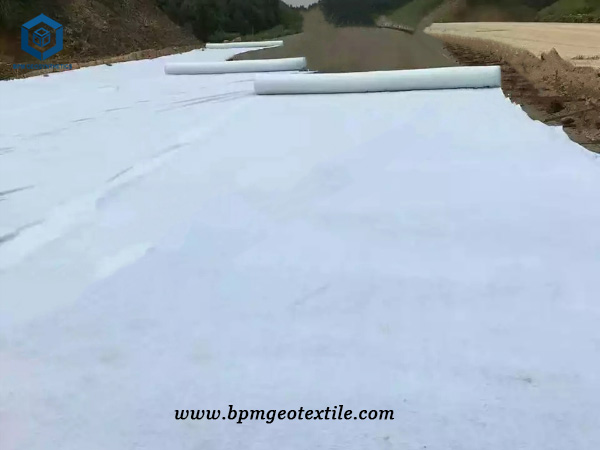
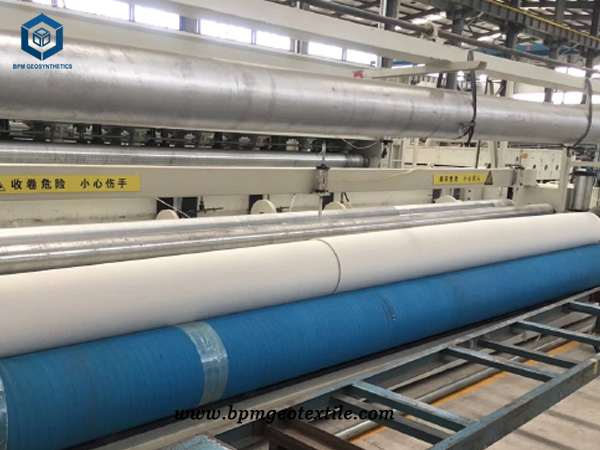
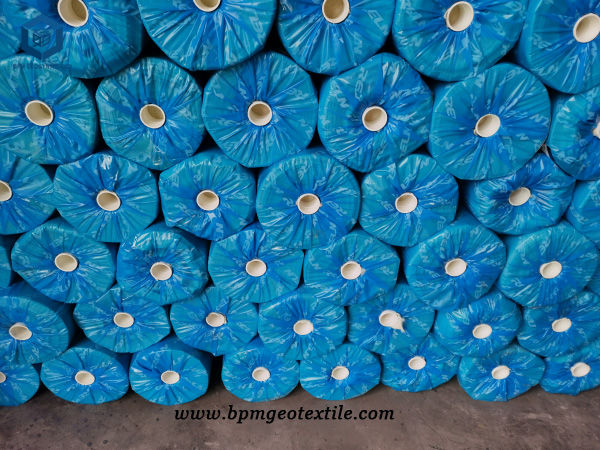
3. Case Study of PP Spunbond Nonwoven Fabric for Road Construction in Chile
BPM Chile customers wanted to purchase geotextile fabric for road construction projects. This is the first time that Chilean customers have purchased geotextile products. The BPM team introduced the geotextile product in detail from production aspects, and sending them the indicators, certificates, etc. BPM understands that the customer’s purpose is road stability, and recommended 250gsm pp spunbond nonwoven fabric to the customer. The BPM team asked Chile customers to take pictures of the construction site in order to check the construction environment. Uneven subsidence, cracks, turf, tree roots, dust, loose particles and debris on the road should be removed to keep the surface dry and level any sharp objects on the road. Afterwards, the BPM team sent the geotextile samples. After the Chilean customer tested the quality of the samples, the samples met the standards. After 3 months, we reached a cooperation.
4. Specifications of PP Spunbond Nonwoven Fabric for Road Construction in Chile
- Total PP Geotextile Quantity – Two 40HQ containers
- PP Geotextile specification – 250 gsm
- Each roll size is 8m*100m
5. About BPM Geosynthetics
BPM has been manufacturing and supplying many types of effective and states of the art geotextile, geomembranes, and other geosynthetics to over 81 countries. Our main customers are from Australia, France, Sweden, UK, Hungary, New Zealand, Poland, Mexico, Ecuador, Brazil, Pakistan, Bangladesh, Thailand, Vietnam, Malaysia, Indonesia, Singapore, Philippines, Sri Lanka, India, UAE, Saudi Arabia, Qatar, Kenya, etc.

